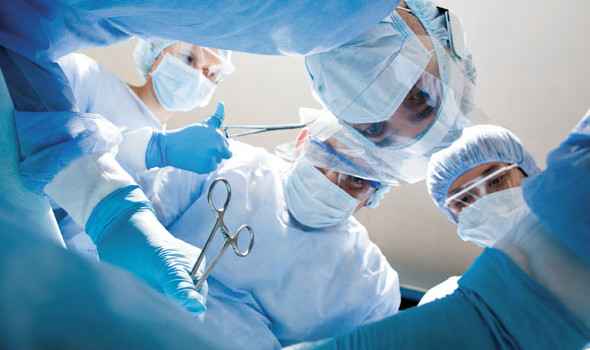Internal fixation is a procedure in which a device is attached to a bone to stabilize it and help it heal. Internal fixation is highly effective at aligning bones and promoting healing. Pins, plates, screws, and rods can all be used to fixate a bone internally.
How it Works
During internal fixation, the patient is taken into the operating room and the area that will be operated on is sterilized. The doctor makes an incision above the bone. Once the bone is accessed, the first step is to place the bone in its natural position (open reduction). Then, the bone is stabilized and kept in that position through the use of special implants.
Implants that can be used in internal fixation include:
- Plates – Internal splints that are connected to the bone with screws. Plates are often left in place after healing is complete.
- Screws – Screws can be used along or in conjunction with other implants. Screws may either be left in place or removed after healing.
- Rods – Rods are inserted through the hollow center of a bone, typically a bone with marrow in the center, especially shinbone and thighbone fractures. Rods are secured with screws at the top and bottom, to prevent the bone from shortening or rotating. Rods may be left in or removed after healing.
- Pins – Used to treat bones that are to small for screws. Pins are usually removed after healing.
There is typically a hospital stay of 1-7 days after an internal fixation. This varies on the type of fracture and age/health of the patient.
When It’s Necessary
Simple fractures in which the bone is cracked but stays in place can often heal without surgery, simply by casting and immobilizing the bone. However, in cases where the bone is fractured in many places or where the pieces of the bone separate significantly, internal fixation may be required.
Fractures are usually immediately apparent after they occur, and internal fixation is usually performed on an emergency basis, as soon as medical imaging confirms that the nature of the fracture requires open reduction and internal fixation.
Prompt Treatment of Fractures is Essential
The importance of prompt treatment for fractures cannot be overstated. If a fracture is suspected, it is always best to seek medical treatment. Signs of fractures include severe pain, visible or palpable bumps on the bone, and an inability to move a joint.
Without prompt treatment, a number of significant complications can occur due to a fracture. Examples include:
- Compartment syndrome – A life-threatening and limb-threatening condition in which pressure in a muscle compartment builds up to dangerous levels. Compartment syndrome is an emergency that requires surgery. It can occur even with prompt treatment, but prompt treatment is essential to prevention and treatment.
- Nonunion – Nonunion occurs when the bone fails to heal at all.
- Malunion – Malunion occurs when the bone heals in a misaligned manner. For example, bones that are not properly set may heal shortened or crooked. It is much harder to treat nonunion and malunion than to treat the fracture when it initially occurs.
- Nerve damage – If the bone moves so that it presses against surrounding structures, it may press against the nerves. If not treated promptly, nerve damage may occur.
- Infection – Infection can occur in the bone, especially if the bone pokes through the skin. Without prompt treatment, the bone and surrounding area are vulnerable to infection.
If you have symptoms of a fracture, you should call your doctor or visit the emergency room immediately.








